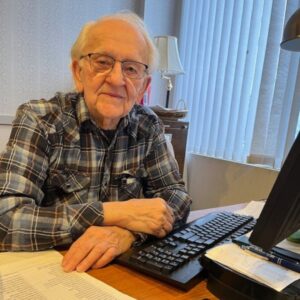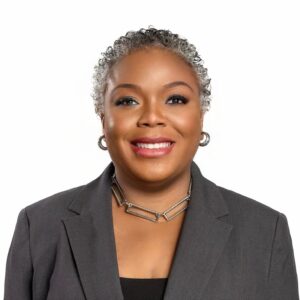Fire Protection Guidelines for Nursing Homes
| INTERVIEW WITH JAMES M. SHANNON, PRESIDENT AND CEO, NFPA Fire protection guidelines for nursing homes |
| The deaths of some two dozen elderly residents in recent Tennessee and Connecticut nursing home fires galvanized attention on an ongoing issue: fire protection in nonsprinklered long-term care facilities. Some older facilities constructed prior to 1991 have not been required to install sprinkler systems. While such installation would seem to be an obvious solution to fire protection concerns, in an era when many facilities are strapped for sufficient funding to cover day-to-day operations, an investment in retrofit is not always an option. Recently James M. Shannon, president and CEO of the National Fire Protection Association (NFPA), offered suggestions on how facilities might think practically about enhancing fire protection in an exclusive interview with Nursing Homes/Long Term Care Management. What have we learned from previous nursing home fires? Shannon: We have learned the value of automatic sprinkler systems. Beginning with the 1991 edition of NFPA 101, all new nursing homes have been required to have automatic sprinklers. Our code has also had some pretty strict criteria for the inventory of existing nursing homes, including circumstances when they would have to be retroactively protected with automatic sprinklers. While no final reports have been issued on the nursing home fires from last year and this, NFPA has taken the somewhat extraordinary position of calling for sprinklers in our nation’s stock of existing nursing homes. Our NFPA Technical Committee on Healthcare Occupancies is also looking at this issue. Our regulation of the furnishings and contents and our criteria for staff response are still important measures, but when we have multiple fatalities in these facilities in such a short period of time as we had recently, it is time to do more. And we believe that doing more will include broader retroactive requirements for automatic sprinklers. Why were many older nursing homes built without sprinkler systems? Shannon: Just like many facilities built before the 1980s, applied combinations of fire-resistive construction and materials were used as the preferred method of construction in nursing homes. Automatic sprinklers became more widely used and accepted in the 1970s, as their positive impact on life safety and property conservation were more widely understood. Up until this time, we had a notion of “fireproof” buildings, meaning that the building materials themselves were not likely to burn. But these structures still had furnishings, interior finishes, and other combustible contents that did burn. Fire-resistive construction materials don’t help out much with the combustible contents problem-but automatic sprinklers do. How difficult or costly is it to add sprinklers? Shannon: Putting in a system when the building is new is much easier. Installing the systems retroactively may impose some difficulty, but it is not an impossible task by any means. The costs for system installations are pretty wide-ranging. Costs for new construction may be in the range of $2 to 4 per square foot, while retrofit costs may be $3 to 5 per square foot. In some cases, the cost may be higher if a reliable, adequate water supply is not on-site. Are there cost-effective ways of doing these installations? Shannon: It is probably easiest to retroactively install the sprinklers during a major rehabilitation of the facility. While it might be preferable to install the entire system at once, most authorities having jurisdiction are usually flexible and may allow or encourage the system to be installed during a series of phases. Are there cases in which installing sprinkler systems might not be possible? Shannon: I can’t imagine a scenario where it isn’t possible. We have seen sprinklers retroactively installed in nursing homes and in hospitals, office buildings, hotels, high-rise buildings, the Library of Congress, and the White House. It can be challenging but it is not impossible. When shopping around for a sprinkler system, what should a facility keep in mind? Shannon: NFPA 13, Standard for the Installation of Sprinkler Systems, provides the design and installation criteria for these systems. NFPA 13 is used exclusively as the design standard for a system that would be installed in a nursing home. As long as the system is designed, reviewed, and approved to meet the criteria in NFPA 13, the facility can be assured of getting a reliable system. Once it is installed, the nursing home operator must then ensure that the system is properly maintained. NFPA 25, Standard for the Inspection, Testing, and Maintenance of Water-Based Fire Protection Systems, can be consulted to determine the appropriate plan, frequency, and protocol for keeping the system functional. Does sprinklers’ quality vary significantly? Shannon: The quality of these devices is excellent. We have had quick-response sprinklers since about 1984, and these are one of the types mandated for use in nursing homes by NFPA 101. In NFPA’s annual report on sprinkler performance in fires, we state that we have no record of a multiple-fatality fire occurring in a fully sprinkler-protected building. Of course, there are caveats to this, such as no flash fire or explosion occurred, and that the system was functional at the time of the event. That is still, however, a pretty convincing statement about the reliability of these systems. Most of the sprinkler system components undergo rigorous tests and examinations. Independent testing laboratories, such as Underwriters Laboratories and Factory Mutual, conduct a series of thorough and exhaustive tests to make sure the components work when they are supposed to. Fires are terrifying situations, and residents with Alzheimer’s disease additionally might be scared by overhead sprinklers, considering that these residents often are frightened of showers. Any suggestions on how to handle this situation? Shannon: I don’t want to downplay any resident’s fear of water, but the alternative is much worse. A few frightening seconds in the discharge of a sprinkler system is likely to be much more tolerable than the pain of a thermal burn, the disfiguration that often accompanies these burns, or the incapacitation from carbon monoxide poisoning that may be caused by the uncontrolled burning of contents in close proximity to the patient. If the issue here is that just seeing a sprinkler can remind the Alzheimer’s patient of a shower, the manufacturers have provided sprinklers that are aesthetically pleasing. The original concept was to make sprinklers less noticeable from the architectural point of view. This can be accomplished in several ways, e.g., concealing the sprinklers behind a recessed cover plate that is matched to the ceiling finish. Besides sprinklers, what areas should nursing homes be exploring to better control fires? Shannon: We could add any number of features to this list. In code parlance, NFPA 101 relies on the “Total Concept” approach to our “defend-in-place” occupancies such as nursing homes. This means that we are going to balance the use of construction materials, sprinklers, fire alarm systems, and staff response to provide the optimum level of protection. Nursing homes tend to be mandated to use a greater percentage of fire-resistive and noncombustible construction materials than would something like an office building. Controlling ignition sources, such as smoking materials or portable space-heating devices, is always in order. After all, if we are good at preventing fire ignition in the first place, we can help ensure that the other protective layers aren’t needed under most circumstances. |
| What steps can a facility take to measure its level of fire safety/fire preparedness? Shannon: The answer is in your question: preparedness. A solid, written plan that is reviewed, updated, and practiced periodically can make a difference. NFPA’s Life Safety Code« (NFPA 101) places a fair amount of responsibility on the nursing home staff to respond properly in the event of a fire. Drilling for such events on all shifts can be a measure for how well you are likely to do during a real emergency. What elements of staff training are especially important? Shannon: As noted previously, knowing what the plan is and being prepared to act on that plan are crucial. The “Operating Features” portion of NFPA 101 for healthcare occupancies states in part, “For healthcare occupancies, the proper protection of patients shall require the prompt and effective response of healthcare personnel.” That statement is just as important as the requirements to ensure that the fire alarm system is functional, the sprinkler system is tested, and the exit doors are not locked. The basics of the plan and the staff training include: removal of all occupants directly involved with the fire emergency, transmission of an appropriate fire alarm signal to warn other building occupants and summon staff, confinement of the effects of the fire by closing doors to isolate the fire area, and relocation of patients as detailed in the healthcare occupancy’s fire safety plan. The time to find out how effective this plan is for your particular facility is when you can practice and critique the plan under nonfire conditions. |
| For more information, visit www.nfpa.org. To comment on this article, please send e-mail to shannon0504@nursinghomesmagazine.com. For reprints in quantities of 100 or more, call (866) 377-6454. |
Related Articles
Topics: Articles , Operations , Risk Management











